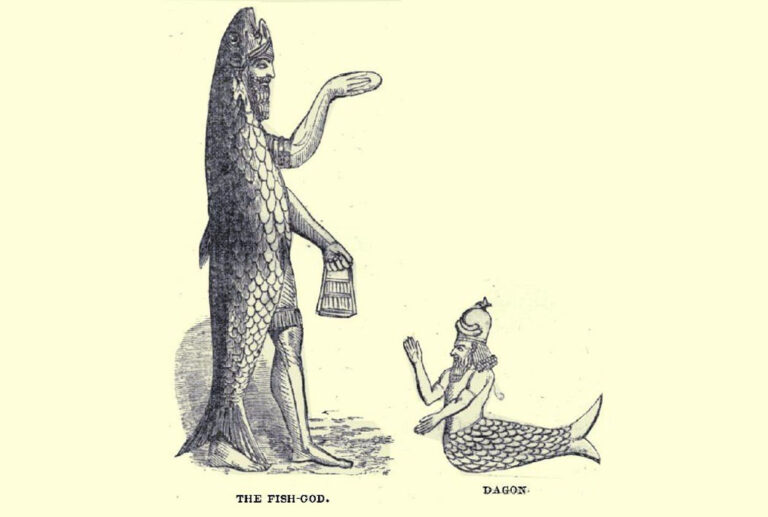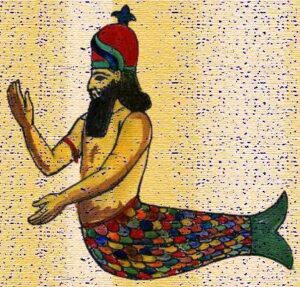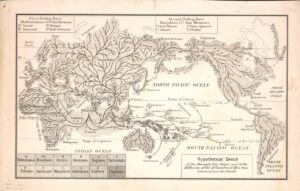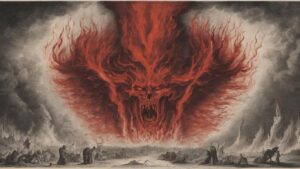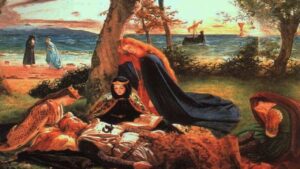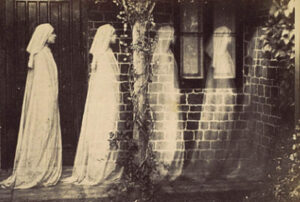Table of Contents
Who is the Dagon?
He is an ancient Mesopotamian deity, often associated with grain and fertility in the mythology of the Philistines. The name “Dagon” appears in texts from different ancient civilizations, including the Sumerians and the Canaanites, with variations in the myths and attributes associated with this deity.
Origin
Ancient Mesopotamian and Levantine cultures trace the origin of the god Dagon. The name “Dagon” is believed to derive from the Akkadian word “dag,” meaning “fish.” Initially a deity of the ancient Sumerians, He later gained adoption by the Akkadians and Babylonians.
The Philistines, an ancient Levantine people, also revered Dagon. In Philistine mythology, He was linked to fertility, agriculture, and the sea. Often depicted with a human upper body and a fish-like lower body, the god symbolized a fusion of agricultural and maritime elements.
Dagon’s worship extended into the biblical narrative, mentioned in the Old Testament of the Bible in relation to the Philistines. The god’s significance and characteristics evolved over time as different cultures incorporated and adapted Dagon into their respective mythologies.
Family
In ancient mythology, Dagon was seen as an individual deity, not part of a family or pantheon. Dagon’s role linked to fertility, agriculture, and the sea, often depicted with a fish-like lower body, emphasizing maritime connections.
Dagon, with roots in ancient Mesopotamian and Levantine cultures, wielded significant historical influence. The god’s worship was prominent among the Philistines, impacting their religious and agricultural practices. Dagon’s mention in biblical texts, particularly in relation to the Ark of the Covenant, illustrates its cultural and historical significance.
Dagon’s influence spread through interactions among ancient civilizations, contributing to the evolution of religious beliefs and practices. As cultures merged and exchanged ideas, Dagon adapted and diversified its role, imprinting on the historical and mythological landscape of the ancient Near East.
Modern Influence
Dagon wielded significant historical influence, originating in ancient Mesopotamian and Levantine cultures. Its worship, prevalent among the Philistines, impacted religious and agricultural practices. The god’s mention in biblical texts, notably in relation to the Ark of the Covenant, illustrates its cultural and historical significance.
As civilizations interacted and exchanged ideas, Dagon’s role adapted, leaving an imprint on the historical and mythological landscape of the ancient Near East. While not actively worshipped in contemporary times, Dagon’s mythology persists in cultural and literary contexts.
In modern fiction, particularly in the horror genre, writers like H.P. Lovecraft have featured Dagon as a monstrous sea deity, contributing to its presence in modern literature. Additionally, Dagon’s imagery and themes occasionally surface in popular culture, including movies, television shows, and video games, often drawing on ancient associations with the sea and monstrous entities.
Despite its diminished role in contemporary religious practices, Dagon’s legacy endures, influencing artistic and literary expressions that draw inspiration from ancient mythologies.
Dagon FAQ
Who is Dagon in the Bible?
Dagon is mentioned in the Bible as the god of the Philistines. There are references to Dagon in the context of the Ark of the Covenant and the city of Ashdod (1 Samuel 5:1-7).
What does Dagon mean?
The etymology of the name "Dagon" is uncertain, but it is generally thought to be related to ancient Semitic languages. The exact meaning is not definitively known.
What did Dagon look like?
Descriptions of Dagon's appearance are not detailed in the Bible. In ancient depictions from other cultures, Dagon is sometimes portrayed as a merman or a deity with the upper body of a human and the lower body of a fish.
What was Dagon the god of?
Dagon was associated with various aspects, including agriculture, fertility, and fish. As a god of grain, Dagon represented agricultural prosperity, and as a god of fish, he may have been linked to maritime activities and fertility symbolism.
